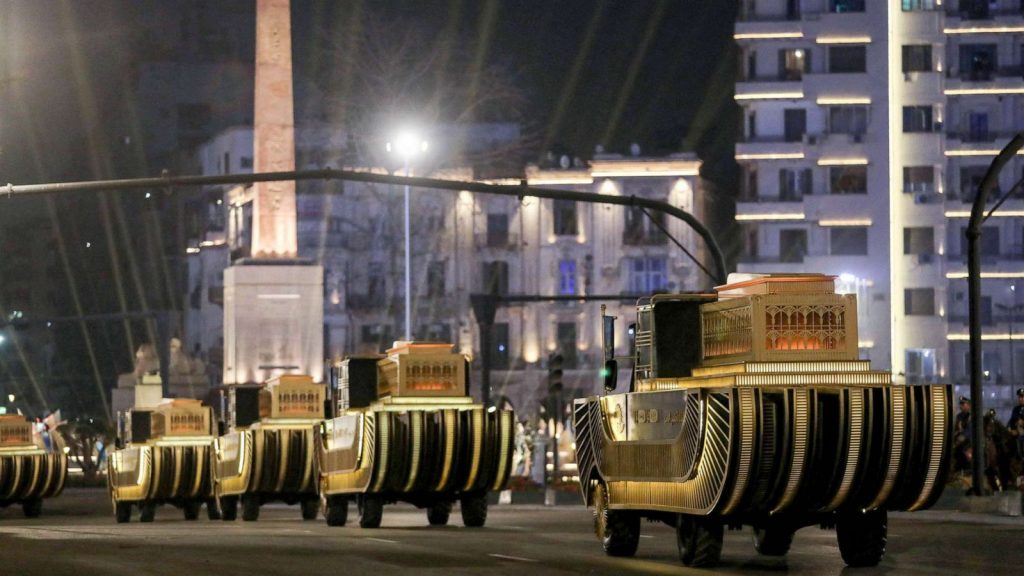Egypt: Royal Mummies Hall ready to receive Egypt’s pharaonic kings, queens

The National Museum of Egyptian Civilization in Fustat (NMEC) Chief Executive Officer (CEO), Ahmed Ghoniem, asserted that the Royal Mummies Hall is fully ready to receive the mummies of Egyptian kings and queens that are set to be relocated to it in an epic parade that will kick off from the Egyptian Museum in Tahrir Square on April 3.
In statements to MENA on Sunday, Ghoniem said the new hall boasts the latest technologies in the display of antiquities, noting that the mummy of each king and queen on display will be placed beside its own coffin and a collection of artifacts that depict his/her history, in addition to other material belongings that they believed they would need in the afterlife.
He made it clear that the royal parade will feature 22 mummies, 18 of which are mummies of kings and four are of queens. All royal mummies will be transported on 22 cars in the ancient Egyptian style, with horses, and war wheels that are similar to the ancient Egyptian war wheels and were made especially for the grandiose event, he added.
The royal mummies being transferred are those of: King Ramses II, Ramses III, Ramses IV, Ramses V, Ramses VI, Ramses IX, Thutmose II, Thutmose I, Thutmose III, Thutmose IV, Seqnen Ra, Hatshepsut Amenhotep the First, Amenhotep II, Amenhotep the Third, Ahmose Nefertari, Merit Amon, Siptah, Merenptah, Queen T, Seti I, Seti II.
After their arrival, the mummies will be kept in a nitrogen glass enclosure for 15 days to be sterilized, Ghoniem said, adding that the hall will be opened for public on April 18 which marks the World Heritage Day.
NMEC consists of two main buildings, the museum building and the reception building, in addition to a garage for cars and another garage for buses and service buildings such as the building of the power and air conditioning station, the electrical distributor building for the museum, the security rooms, and parking spaces for the museum’s employees.
This is also in addition to the general site of the museum, which includes gardens and places for exhibiting, a Roman theater, and the area surrounding the archaeological laundry.
The total area of the project is 33 acres and the building area occupy approximately 96000.00 m2.



